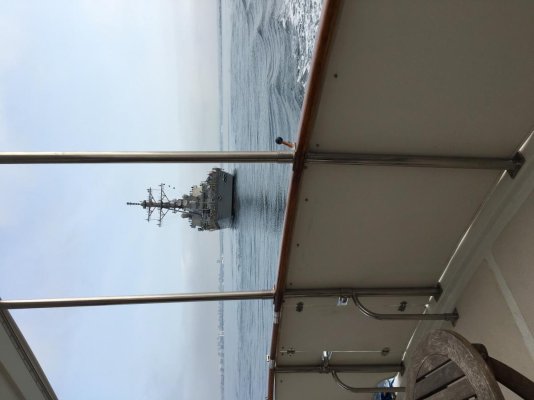Capt. Rodbone
Senior Member
- Joined
- Sep 6, 2020
- Messages
- 172
- Location
- U.S.
- Vessel Name
- SV Stella Polaris MV Sea Turtle
- Vessel Make
- 1978 VanDine Gaff rigged schooner, 1978 Grand Banks Classic Trawler
We got the deal done today on the now our Grand Banks 42 Classic. Yes the old adage about the two best days in a boater’s life is true with me so I’m relishing the moment! I’m embarrassed to admit what number boat this is, but at 62 I remind myself that even with the hope of many healthy years ahead, there won’t be very many more “euphoric boat purchase days”
The plan is to begin the trip from Nashville TN to Guntersville Alabama Monday morning, where we will winter, and then take her to our Josephine AL slip on the AL coast until we start serious cruising in a year or so.
My question is what it is the proper hailing technique on the VHF radio when trying to reach other parties from a Trawler? We’ve seen every approach under the sun in our years of sailing however I always tried to identify ourselves as “the sailing vessel “fill in the blank at the time”name. It might be overkill on my part but in narrow channels, high traffic count, etc. I suspect the vessel I’m calling, and quite possibly other nearby vessels appreciate knowing which boat and where, as to understand my intentions or request.
With a trawler is it “motor vessel”, “power vessel” , “motor yacht”, “ or “ trawler Sea Turtle”? An acceptable answer might be it doesn’t matter, however I’ve always desired to be specific and innuniciate plainly, at least as much so as a born and raised southerner is capable! ?
The plan is to begin the trip from Nashville TN to Guntersville Alabama Monday morning, where we will winter, and then take her to our Josephine AL slip on the AL coast until we start serious cruising in a year or so.
My question is what it is the proper hailing technique on the VHF radio when trying to reach other parties from a Trawler? We’ve seen every approach under the sun in our years of sailing however I always tried to identify ourselves as “the sailing vessel “fill in the blank at the time”name. It might be overkill on my part but in narrow channels, high traffic count, etc. I suspect the vessel I’m calling, and quite possibly other nearby vessels appreciate knowing which boat and where, as to understand my intentions or request.
With a trawler is it “motor vessel”, “power vessel” , “motor yacht”, “ or “ trawler Sea Turtle”? An acceptable answer might be it doesn’t matter, however I’ve always desired to be specific and innuniciate plainly, at least as much so as a born and raised southerner is capable! ?

